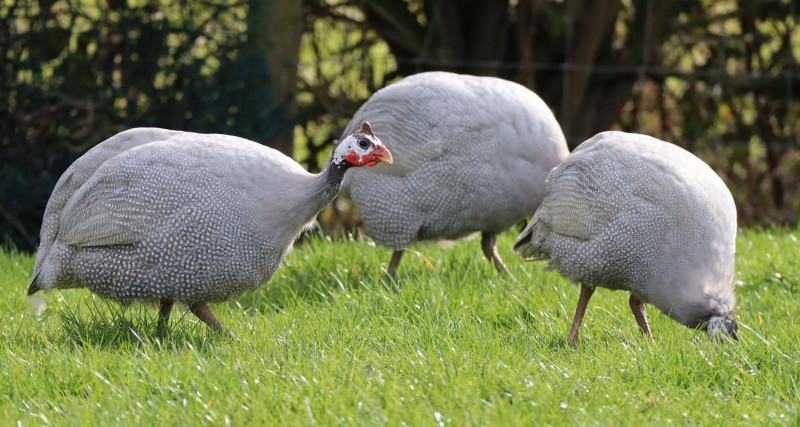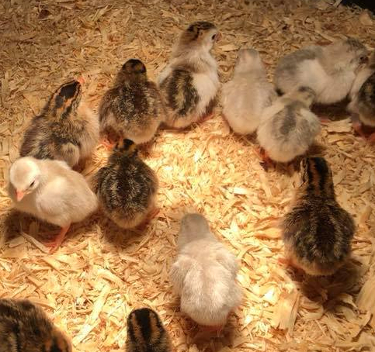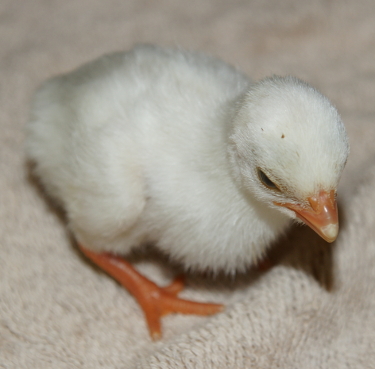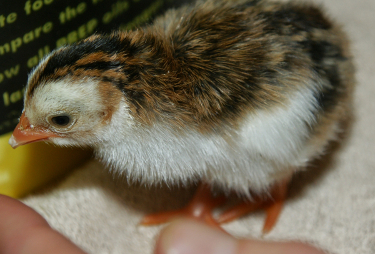Guinea fowl colours for adults and keets.

Table of Contents
How many colours of Guinea fowl are there?
There are over 20 different colours of Guinea Fowl. Some of them are really just different shades of the other but they are all listed here.
Guinea fowl colours are mostly just shades of blue , brown and white or combinations thereof. They do not always breed true and there are no distinct feather patterns as you would get in chickens. They are either plain or spotted.

Above - Multicoloured keets in a brooder.
Guineas are hard feathered and are all beautiful and distinctive. Laying ability does not change with colour.
Guineas all have colourful featherless heads with a "ruff" of bristles on the neck.
Pearl Gray:
These are the traditional plumage and the original colour of Guineas. A dark Gray with white dots through out their plumage. They are the first and the most common and a favourite, prised by many for their beautiful dotted feathers.
Below: The traditional colour of a Guinea.

Keets are brown with black stripes and markings and tan underneath. The head has a wide black stripe down the centre with two narrow black stripes on each side of it, with narrow orange stripes between the black. Beak, legs, and feet are a light orange.
Below: Guinea fowl keets.

White:
These are pure white with a few black hairs on the back of the neck.
The whites have lighter coloured skin and the meat is lighter colour as well.
Below: A white Guinea fowl keet.

Normally all the coloured guineas have dark meat. Both are fine textured and with a gamey taste. Both are very good eating and a fine delicacy.
Keets are pure white with orange beak, legs, and feet.
Pied or splash:
These have a white patch covering in the chest, wings and even the sides. It can be anything from a thin stripe to covering almost all of the bird. Pied can be of various mixed colors. Pied birds can be any colour with white on them.
Below: Pied Guinea fowl feeding.

Below: The pied keets are the colour of the adult on top with white belly and front. Beak, legs, and feet are a light orange.

Lavender:
They are light blue with white dots. A lighter version of the original type.
Below: A Lavender Guinea fowl hen.

Keets are a light and dark blue with stripes and markings and the underside is light blue. A broad dark blue stripe runs down the centre of the head with two narrow dark blue lines on each side and narrow tan stripes between the dark blue stripes. Beak, legs, and feet are a light orange.
Light Lavender:
These are a light version of the Lavender. The colour is in between the Lavender and the Porcelain.
Keets are a solid light blue with a white front. Final colour is not seen until the keets moult to adult plumage.
Royal Purple:
Royal purple guineas have a purple sheen over very dark feathers and not spots. They can have some spots or barring on the wing panels and sides.
The keets look like pied with white underparts and irregular black striping on the back and the top of the head. Beak, legs, and toes are orange. The keets change colour slightly as the moult and become darker.
Coral Blue:
Sky blue guineas. No spots with bars in the flank area.
Keets light blue with dark blue irregular striping on their backs. The top of the head is dark blue irregularly striped with tan. The front and underparts are white. Beak, legs, and feet are a light orange.. Keets moult to a darker colour with adult plumage
Buff Dundotte:
Light tan with white dots. The hens are darker.
Keets are a light tan colour with darker stripes on the back and head. Beak, legs, and feet are a light orange.
Day old keets are darker on the hens and lighter on the males so can be sexed.
Buff:
These are a cream colour with no spots.
Keets are near white with light irregular cream stripes on the head and back. Keets feather near white and darken as the moult.
Porcelain:
A pale blue with white dots. Much lighter than lavender
Keets are off white with very light blue gray stripping on the head and back. Broad and narrow stripes on the head again. They feather near white until they molt at two to three months.
Opaline:
White blue mix
Keets are near white with a splash of blue on the head and back. no spots.
Slate:
Slate blue with a sheen around the neck. The plumage is even and uniform no spotting or barring.
Keets are a rusty red colour with no stripes, very similar to Rhode island red chicks but with lighter underparts.
Brown:
Dark brown with white spots.
Keets look like standard pearl and darken as they moult.
Powder Blue:
These are a even light blue colour. No spotting or barring.
Keets are a solid lead colour.
Chocolate
A dark chocolate brown with a little spotting and barring on the sides.
Keets are near white with uneven striping on their head and back.
Violet:
A very deep purple with sheen. Even plumage with no dots or barring.
Keets are a red with a white belly. The colour and sheen comes with adult feathers.
Bronze:
Almost black with a bronze in the feathers over the shoulders, neck and chest. The primary wing feathers have a reddish lacing.
As keets are very similar ordinary guineas, the colour comes with adult feathering.
Sky Blue:
Essentially coral blue with no spotting or barring. They are an even blue with lacing in the feather.
Keets are a solid light blue colour with white belly and wings. They feather a light blue with colour similar to the Powder Blues but get a darker blue as they mature.
Pewter:
These are a pewter Gray colour. Sometimes a little streaky in appearance.
Keets are a solid rusty red colour like the Slates only a little lighter in colour.; They feather light blue, and later turn to the pewter Gray colour.
Blonde:
A sun bleached brown.
Keets are light brown with faded striping that is darker on the head. The beaks, legs and feet are orange.
